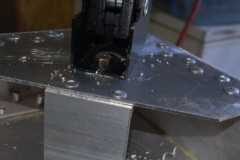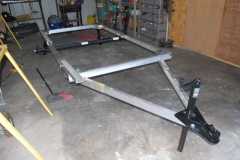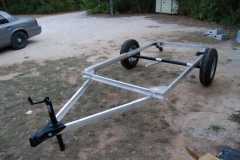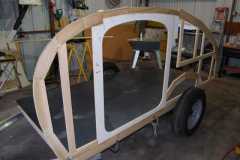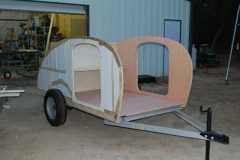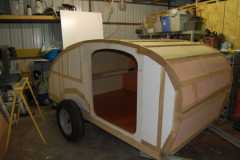Don't know about being a powerful thinker, Bryant.

Just an old guy without a formal education that likes to design & build things. My only practical experience with using stressed aluminum was designing & fabricating three 12 ton capacity welded aluminum fishing boats and net hauling machinery. They floated & pulled 3-4 tons/hour.

I have considered using aluminum for a trailer chassis, but have yet to find a satisfactory formula that I could trust without overbuilding & weighing as much as steel. So please take my questions & statements in that vein.
Rather than a cantilevered beam, wouldn't a trailer tongue be considered a simply supported beam with a concentrated load? The ends being the axle & hitch. The load being concentrated at the front of the cabin.
Also, isn't the spread sheet that you provided for a static load rather than a dynamic load? Meaning that the load is constantly changing as the trailer is towed. This is the big question for me when considering aluminum, because it cycles way fewer times than steel before it cracks & breaks.
Some time ago member Paul C from Australia provided us with the Australian trailer laws which include tongue strength rules. Member Angib (Andrew) from England interpreted them & published them in the Design Library (click Design Resources at top of the page).
http://www.angib.pwp.blueyonder.co.uk/t ... tear84.htmThe formula relies on vertical section modulus (in3), yield stress (lb/in2), tongue length, and tongue design (single, double, triple). Example: 36" 'V' tongue using 1/8x2x1 steel rectangular tube.
.280 (in3) x 31,500 (yield stress for closed section (lb/in2) = 8,820 x 2 (two rails) = 17,640 ÷ 18" (1/2 the length of the rails) = 980# tongue rating.
The yield stress for an open steel section (channel like yours) is 26,250 psi. For aluminum you could cut that by 1/3 (per your structure spread sheet)
edit - should have said - divide by 3 and see where you're at. BUT that still doesn't address the reduced number of cycles that aluminum will withstand. Any ideas?
Fred

